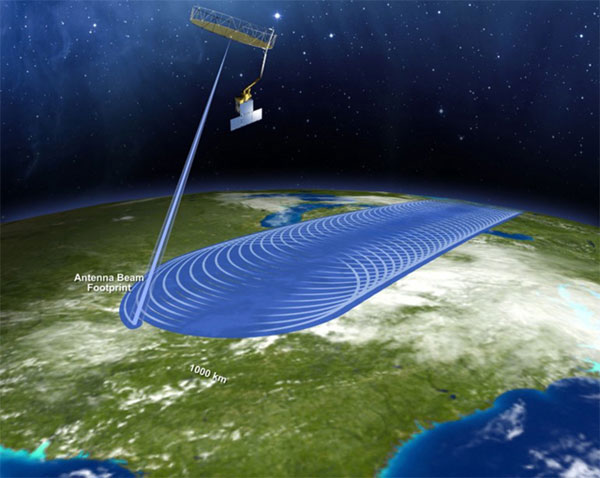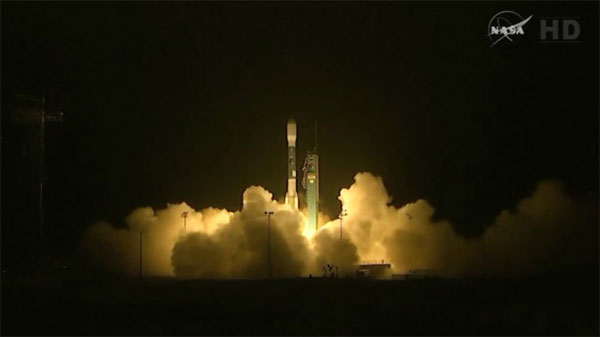NASA has successfully launched the SMAP satellite
Three days ago, according to the latest scientific news, NASA successfully launched the Soil Moisture Active Passive (SMAP) satellite on orbit , to measure soil moisture on a global scale, using United Launch Alliance missiles. Delta 2.
Gizmag newspaper reported recently, US Space Agency (NASA) successfully launched the Soil Moisture Active Passive (SMAP) satellite with United Launch Alliance Delta 2 missiles . SMAP is capable of performing the task of measuring soil moisture not only in a certain region but also within 2-3 days of global space. Soil moisture data from SMAP can be used to provide useful information to farmers during the season. According to NASA, SMAP is capable of providing accurate and fast information on current and future humidity thanks to the support of the most advanced technology.

In order to measure the detailed moisture content of the entire planet, SMAP will be placed in the polar orbit in sync with the orbit of the Sun, using the L-band radar system and L-band radiation to continuously scan every 5cm of earth on Earth. At the same time, SMAP is also capable of collecting moisture data with a resolution of about 50km, although it is not possible to provide a moisture content difference between this land and another land, but still allow data provision. The most comprehensive and detailed moisture content ever.
Twice the previous launch satellite failed. For the first time because the wind speed was too high at an altitude of nearly 10,363m, the second time was canceled due to the minor repair work and the preparation of the Delta 2 missile. What more complications are there. SMAP use is an unprecedented leap compared to the technologies used so far. Specifically, older satellite generations could not determine the moisture content of the ground with high resolution and accuracy like SMAP.

SMAP is the science of NASA's great success
Around 6 pm on January 31, 2015, from Vandenburg Air Force Base, California, the Delta 2 rocket was pushed into orbit with a force of £ 600,000 thanks to the thrust of three solid fuel missiles combined with a The main propulsion starts in less than 2 minutes. The main engine stops working after 4 minutes 21 seconds after starting and then 6 seconds to perform the first separation process. Next is the separation of general technical protection parts of SMAP satellite.
SMAP's solar battery is also successfully separated through a remote measurement device confirming that the crystal has been successfully launched. Now in orbit, SMAP will provide humidity data at an altitude of 686km at the extreme standard orbit.
This will be a useful tool in providing soil moisture data collected from SMAP satellites during the time of SMAP operation, which can also help agencies and organizations understand more about the link between water, energy and carbon cycles to provide more accurate weather and climate projections.
- NASA launches a satellite measuring soil moisture
- Successfully launched Measat-3b satellite from Malaysia
- New NASA satellites can predict droughts and floods
- China successfully launched a new map satellite
- China successfully launched the North Dau satellite
- China has successfully launched the information satellite
- Successfully launched the AsiaSat 6 satellite rocket into orbit
- India successfully launched the RISAT-1 satellite
- Russia launched a satellite to spy
- Indonesia launched its first self-created satellite
- China successfully launched Bac Dau 2 satellite
- China successfully launched a new communication satellite
 Van Allen's belt and evidence that the Apollo 11 mission to the Moon was myth
Van Allen's belt and evidence that the Apollo 11 mission to the Moon was myth The levels of civilization in the universe (Kardashev scale)
The levels of civilization in the universe (Kardashev scale) Today Mars, the sun and the Earth are aligned
Today Mars, the sun and the Earth are aligned The Amazon owner announced a secret plan to build a space base for thousands of people
The Amazon owner announced a secret plan to build a space base for thousands of people